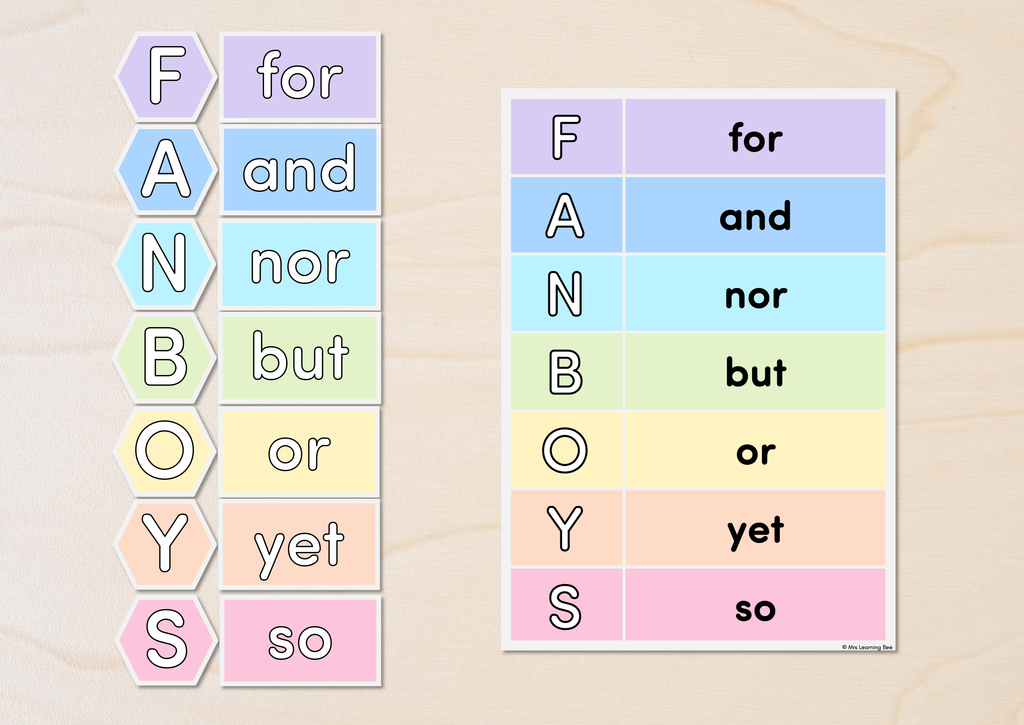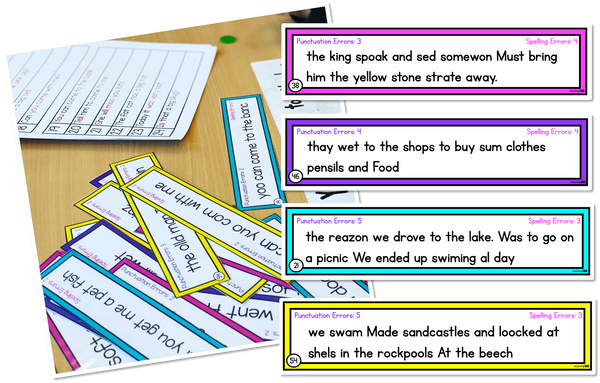Are you trying to teach your students about the different types of sentences and struggling to clarify them? These simple, compound, and complex sentence examples will make it much easier to highlight the difference between these three main types of sentences and help your students flourish!
As your young students become more capable writers, they'll need to learn how to explain their thinking in clear, cohesive ways. There comes a time when simple sentences just aren't enough anymore! If your students are rambling with run-on sentences or they are writing sentence fragments instead of complete thoughts, it's time to teach them about the types of sentences.
Fortunately, teaching each sentence type doesn't have to be challenging. It helps to keep things really clear and straightforward. Consider making anchor charts to map out the three types of sentences explained here, compare and contrast them, and give students plenty of opportunities to interact with them. The more they get to create their own sentences, the better!
Defining these types of sentences all starts with one key idea: understanding clauses.
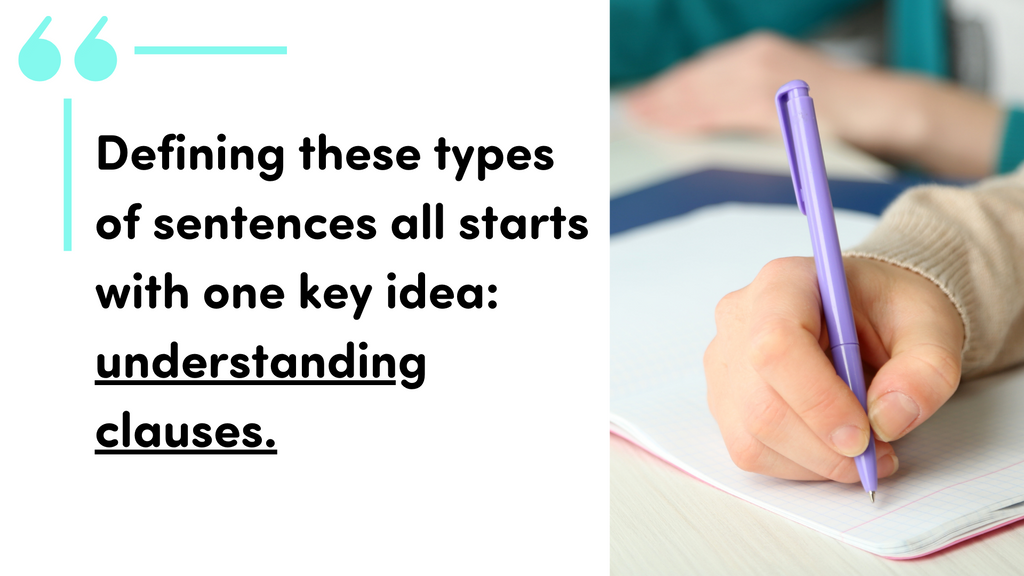
Clauses are a group of words with at least one subject and one verb.
Sentences may contain several clauses, there are different kinds of clauses, and the clauses can be arranged in several ways.
Examples:
- The children played
- The dog barked
- Molly and Mabel read
These examples all have a subject, someone or something completing the action, and the verb.
What is a Simple Sentence?
Simple sentences contain one independent clause. They can have many adjectives, adverbs, and prepositional phrases, but they only contain one subject-verb unit.
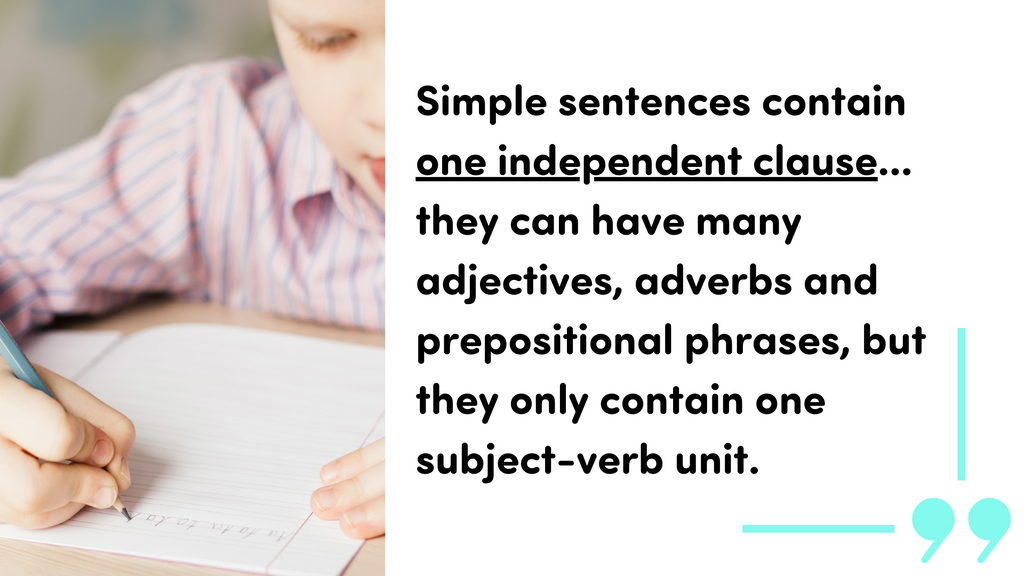
The examples above can all be considered simple sentences because they are complete thoughts on their own. If they don't make a complete idea without further details, they will generally be dependent clauses because they depend on the main clause to make sense.
Simple sentences are usually short sentences, but you will see that there are many options and variations! You can use any type of verb tense (present tense, past tense, future tense, etc.), several subjects, several verb phrases, and all the adjectives and adverbs you'd like.
Simple Sentence Examples
- Naima ate lunch.
- The fluffy dog jumped over the lumpy log.
- Nine first-grade students examined their textbooks.
Compound Subjects and Verbs
Your students might ask about what happens if you have more than one subject or verb. This is a great learning moment! You can have multiple subjects (called a compound subject) or verbs (called a compound verb).
- Sheila and Kate went to the park.
- Rohan ate breakfast and walked to school.
These are both still simple sentences, even with these extra details.
Lesson Idea: Ask students to act out different actions in the classroom. Record their actions as simple sentences on the board ("Salvador walks" or "Gemma sings."). After 1-2 times, ask students to tell you what to write or have them write the sentence on the board. You can also add in different actions and people to model the compound verbs and subjects. Add adverbs and adjectives too! This is a great way to bring all of those grammar skills together.
More Simple Sentence Writing Resources
- Simple Sentence Writing Activities for Kindergarten
- How To Teach Beginning Writing
- Sentence Editing Checklists
- Interactive Grammar Lessons Slides
What are Compound Sentences?
Compound sentences are very similar to simple sentences, except they contain two independent clauses. Each clause could stand alone as a simple sentence, but the writer has decided to merge them together using a coordinating conjunction.
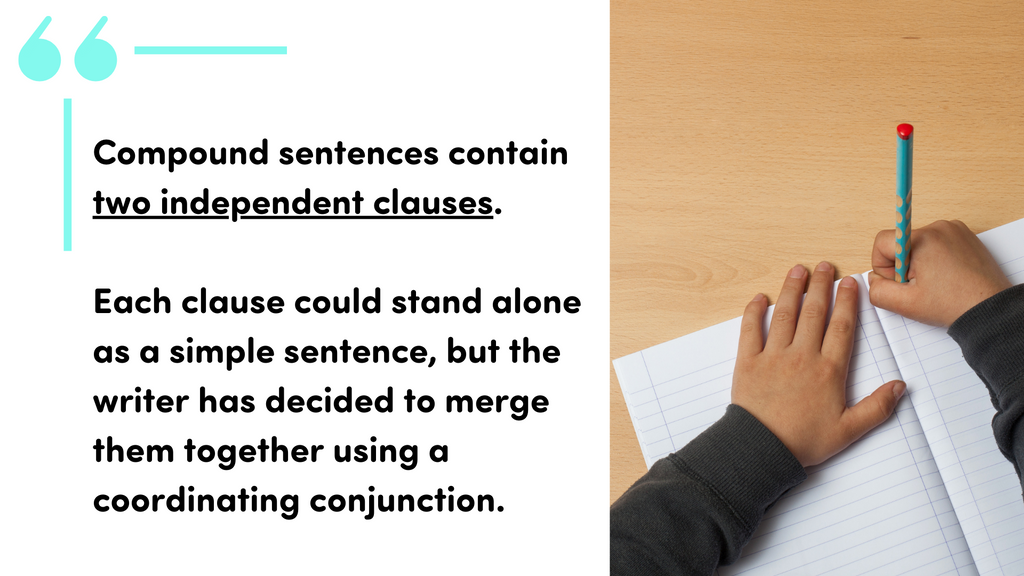
We generally teach coordinating conjunctions with the acronym FANBOYS, which lists the coordinating conjunctions in an easy-to-remember format.
- for
- and
- nor
- but
- or
- yet
- so
These coordinating conjunctions have the following use cases:
- for - because or since, provides a reason why
- and- adding more information, joining similar ideas
- nor - negative form of 'or', none or neither option
- but- contrasting information, compares opposite ideas
- or - different options, connects choices
- yet- contrasting information
- so- cause an effect, shows a reaction, solution or consequence
Compound Sentence Examples
- The children ate lunch, but the teacher did not.
- We enjoyed the festival, so we decided to go again next year.
- The deer ate the grass, and the squirrels climbed the trees.
Note: Depending on your context, students may be taught the above sentences WITHOUT the comma before the coordinating conjunction. Either version is now considered to be acceptable English.
Download your free FANBOYS display here.
These Sentence Editing Task Cards are a great way to practise this skill! They also include spelling and punctuation errors to reinforce several skills at the same time.
Lesson Idea: Give students different magazine articles, newspapers, or stories - either directly from the source or printed on regular paper. Pass out some highlighters. Have students highlight any coordinating conjunctions that they find on the page. Share the sentences together as a class and break them down together. It can help to create a mini checklist to review for each one (two independent clauses and one of the FANBOYS).
This will help the variety of sentence structures they're encountering, and it will naturally bring up a few questions. For example, they'll see "and" and "for" often. They'll need to either learn or be reminded that these words have additional roles - "and" can be used to pair nouns, verbs, and other types of words together as well, and "for" is often used in a prepositional phrase.
What is a Complex Sentence?
As you can imagine, complex sentences are more complicated. They typically use two clauses, but they add a relative pronoun or subordinating conjunction to make one of the clauses dependent on the other. This means that one clause can stand on its own as a complete thought and can be a complete sentence, but the other would not make sense on its own.
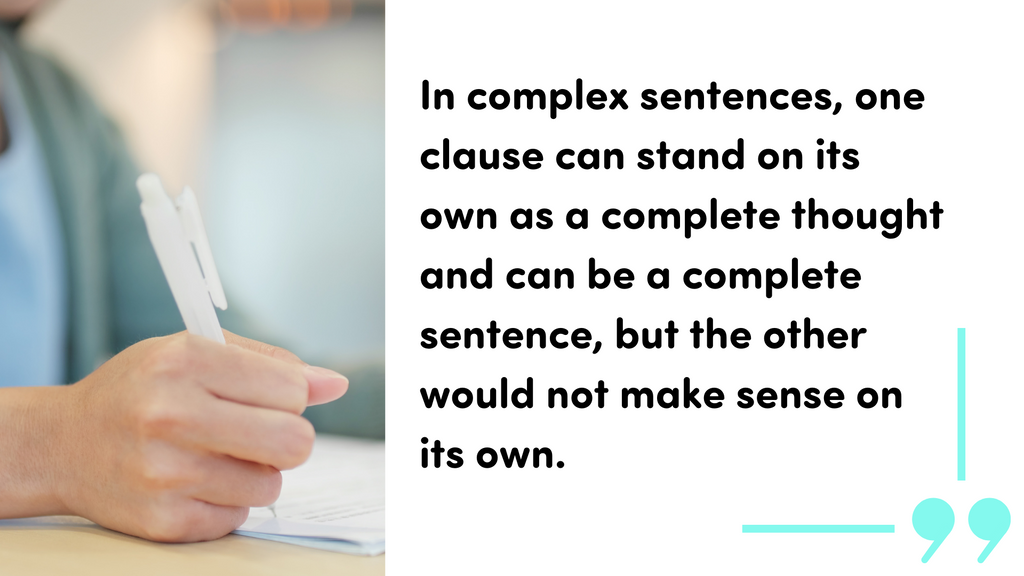
Need some examples of those relative pronouns? These are generally all the words we use to bring clauses together that aren't FANBOYS. Examples include:
- that
- which
- although
- while
- since
- because
- whenever
- even if
These are really common words. If you've already been reviewing compound sentences with your students, they've probably encountered a few of these along the way!
Complex Sentence Examples
Unfortunately, the example sentences for complex sentences aren't quite as straightforward as the options above.
Type 1: Independent Clause Followed by a Dependent Clause
This is a standard structure for this type of sentence. It has both types of clauses, but the independent clause comes first, followed by the dependent clause.
- Matilda rushed into the cathedral as the children ran by.
- The Eagles frowned in disappointment at the loss, while the Ravens beamed with pride over their victory.
- Mr. Jensen secured the hurricane shutters in case the storm picked up again.
Type 2: Dependent Clause Before the Independent Clause
You can also place the dependent clause before the independent clause if you follow it with a comma.
- Whenever the old man snored, the children covered their heads with their pillows.
- In case she didn't get home on time, Karena left $30 on the table for pizza.
- Before he knew it, Sunil woke up feeling as if he'd just fallen asleep.
Type 3: Relative Clauses
Instead of structuring the sentences with one clause, the conjunction and then the dependent clause, you can actually add the relative clause in the middle of the sentence.
- The children, who were waiting eagerly to hear Santa's footsteps, were pretending to sleep in their beds.
- The teacher, who was known for his sense of humour, added three joke questions to the test.
- Ms. Hanson was frustrated because the children climbed on top of their desks.
Lesson Idea: Select a mentor text. You can use one of the texts you're reading together in class or have students use their independent reading books. Ask students to find examples of the different types of sentences and discuss which of the sentences are the most interesting. What lessons could they learn from their favourite authors which they can add to their own writing?
Looking for more?
There are many more resources like these simple, compound, and complex sentence examples on The Hive! I’ve created hundreds of evidence-based resources, videos, and apps to make teaching so much easier and less stressful.
Get a free 7 day trial of The Hive today to check them all out!





